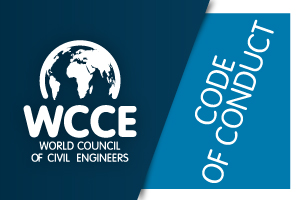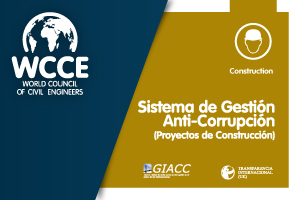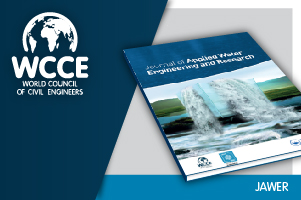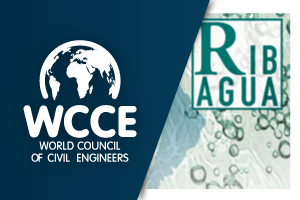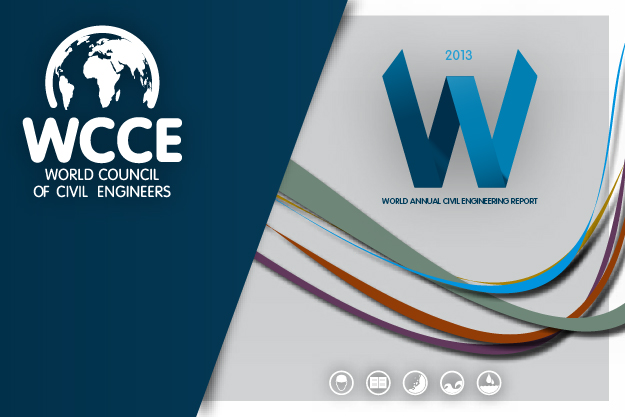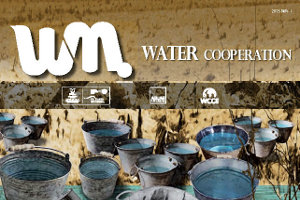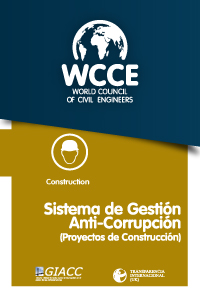 The Project Anti-Corruption System (PACS) is an integrated and comprehensive system designed to assist in the prevention and detection of corruption on construction projects. It uses a variety of anti-corruption measures, which can be integrated into project management. These measures impact on all project phases, on all major participants, and at a number of contractual levels. PACS comprises the PACS Standards and the PACS Templates.
The Project Anti-Corruption System (PACS) is an integrated and comprehensive system designed to assist in the prevention and detection of corruption on construction projects. It uses a variety of anti-corruption measures, which can be integrated into project management. These measures impact on all project phases, on all major participants, and at a number of contractual levels. PACS comprises the PACS Standards and the PACS Templates.
Why is a project anti-corruption system necessary?
Corruption on construction projects is a complex problem:
-
It can take place during any phase of a project, including project identification, planning, financing, design, tender, execution, operation and maintenance.
-
It may occur at any level of the contractual structure.
See How Corruption Occurs and Corruption Examples for examples of corruption in each project phase.
There is no single or simple method by which to prevent such corruption. Comprehensive anti-corruption measures need to be integrated into the project as part of project management.
During the last 30 years, material improvements have been made to the safety of personnel in factories and on construction sites. Similarly, significant improvements have been made to the quality of manufactured products and construction projects. These improvements have come about only as a result of improved management practices. These practices include detailed written procedures, contractual obligations, training, independent inspection, audit, reporting and enforcement. These improvements have been achieved as a result of hard work and increased resources. A similar approach needs to be taken in relation to corruption prevention.
Why use PACS?
PACS is not a guarantee against corruption. However, the use of PACS will:
-
reduce the opportunity for corruption;
-
reduce project costs;
-
provide a level playing field for companies undertaking the works and services;
-
satisfy the public that corruption is being tackled.
PACS Standards
The PACS Standards recommend and describe anti-corruption measures which should be integrated into the management of construction projects. There are twelve PACS Standards, each of which deals with a separate anti-corruption measure. The Standards are explained by Frequently Asked Questions, and cross refer to the relevant PACS Templates. The PACS Standards are as follows (click on title to access each Standard):
PS 1: Independent assessment: An independent assessor should be appointed whose duty is, for the duration of the project, to monitor and assess the project for corruption and make appropriate reports. In the case of a large and complex project, an independent assessor may be appointed specifically for that project. For smaller projects, an independent assessor may be appointed to monitor a number of projects.
PS 2: Transparency: The government or project owner should disclose project information to the public on a website on a regular basis and in an easily accessible and comprehensible form.
PS 3: Procurement: The project owner should implement fair and transparent procurement procedures which do not provide an improper benefit or advantage to any individual or organisation.
PS 4: Pre-contract disclosure : At tender stage, the project owner and each tenderer for a major contract should provide each other with relevant information which could reveal a risk of corruption (for example in relation to their principal shareholders, officers, financial status, agents, joint venture partners, major sub-contractors, criminal convictions and debarment). Each major contractor should do the same with each tenderer for its major sub-contracts.
PS 5: Project anti-corruption commitments: The project owner and each major project participant should provide anti-corruption contractual commitments which expressly cover the main types of corruption, and which oblige them to implement anti-corruption measures. Remedies should be specified in the event of breach of these commitments.
PS 6: Funder anti-corruption commitments: The project owner and each project funder (equity investor, bank or guarantor) should provide anti-corruption contractual commitments to each other which expressly cover the main types of corruption, and which oblige them to implement anti-corruption measures. Remedies should be specified in the event of breach of these commitments.
PS 7: Government anti-corruption commitments: Relevant government departments should take steps to minimise extortion by their officers in the issuing of permits, licences and approvals. They should appoint a senior officer to whom complaints of bribery and extortion can be made, and should publicise a list of fees and time-scales which apply to government procedures.
PS 8: Raising awareness: Major project participants should raise awareness among their staff of the damage and risks of corruption by:
-
Providing anti-corruption training for relevant staff.
-
Implementing a gifts and hospitality policy.
PS 9: Compliance: Major project participants should appoint a compliance manager who will take all reasonable steps to ensure compliance by the company and its management and staff with their anti-corruption commitments.
PS 10: Audit: Financial audits should be carried out to ensure as far as possible that all payments by the project owner have been properly made to legitimate organisations for legitimate services. Technical audits should be carried out to ensure as far as possible that the project design, specification and construction are in accordance with good technical practice and provide value for money. Auditors should be aware of the risk that any deficiencies they identify may be caused by corruption, and should make appropriate reports.
PS 11: Reporting: Safe and effective systems should be established by which corruption on the project can be reported by the public, by project staff, and by the independent assessor.
PS 12: Enforcement: Enforcement measures for breach of anti-corruption commitments should include civil enforcement (e.g. disqualification from tender, termination of contracts, damages and dismissal from employment). The risk of criminal enforcement (e.g. fines and imprisonment) should be highlighted.
PACS Templates
The PACS Templates are model agreements and tools which parties can use to assist them in implementing anti-corruption measures on projects. They can be used in their existing form, or may be modified to suit the requirements of the country and project. These templates have been designed for major projects. They will need to be simplified where they are to be used for smaller projects. Click on either the "pdf" or "word" link beside each template title below to access the template.
Template 1: Independent Assessor Agreement EN (pdf) (word) / ES
pdf
(pdf)
(1.47 MB)
Template 2: Anti-Corruption Agreement EN (pdf) (word) / ES
pdf
(pdf)
(1.45 MB)
Template 3: Notices of Breach EN (pdf) (word) / ES
pdf
(pdf)
(1.43 MB)
Template 4: Disclosure Form EN (pdf) (word) / ES
pdf
(pdf)
(1.52 MB)
Template 5: Disclosure Assessment Guide EN (pdf) (word) / ES
pdf
(pdf)
(1.55 MB)
Template 6: Anti-Corruption Rules for Individuals EN (pdf) (word) / ES
pdf
(pdf)
(1.45 MB)
pdf
Template 7: Benefits Register EN (pdf) (word) / ES
pdf
(pdf)
(1.44 MB)
Template 8: Anti-Corruption Training Manual EN (pdf) (word) / ES
pdf
(pdf)
(1.62 MB)
Template 9: Anti-Corruption Notice to Government EN (pdf) (word) / ES
pdf
(pdf)
(1.43 MB)
pdf
Template 10: Anti-Corruption Government Commitment EN (pdf) (word) / ES
pdf
(pdf)
(1.43 MB)
How to use PACS
A government, a public or private sector project owner, or a funder may use PACS as follows:
-
Each PACS Standard lists a number of recommended measures. A government, project owner or funder can compare its existing project anti-corruption measures with the measures recommended in the PACS Standards. In undertaking this comparison, it will be assisted by the applicable Frequently Asked Questions, which provide guidance on the relevant standard.
-
If a government, project owner or funder determines that it is not currently implementing a recommended measure at all, it may decide to implement the measure in whole or in part. If it determines that it is currently implementing a measure, but that its implementation can be improved in accordance with the recommended measure, it can introduce improvements into its system.
-
The PACS Standards have been designed with the intention that they should all be used in order to achieve the maximum level of anti-corruption protection. However, implementation needs to be tailored to the size and value of the project. On major projects, the full measures may be used. On smaller projects, only some of the measures, or simplified versions of the measures, may be used.
Who can require the PACS measures to be implemented on projects?
-
A project funder may require some or all of the PACS measures to be implemented on all projects funded by it, or on all projects above a certain value or size. It may make this requirement a condition of providing funding.
- GIACC welcomes suggestions on how PACS can be improved. GIACC also appreciates feedback if you have found PACS useful, or have implemented PACS in whole or in part on your projects. If you have any suggestions or feedback, please Contact GIACC.
History of PACS
PACS was first published as Consultative Edition (1) in January 2007, and was then amended and issued as Consultative Edition (2) in July 2007. After taking account of international feedback, it was published as the First Edition in May 2008. In November 2008, two additional PACS Standards were issued, Frequently Asked Questions were added, the PACS Standards were published in inter-linked web-pages rather than in a separate document, and the PACS Templates were modified. Future enhancements will be added from time to time, and the date of these enhancements will be recorded at the foot of each Standard and Template.


